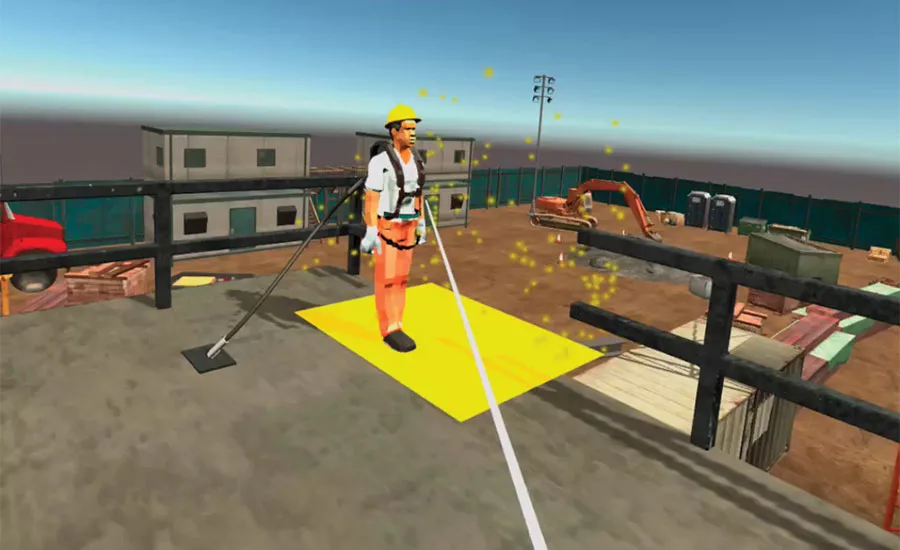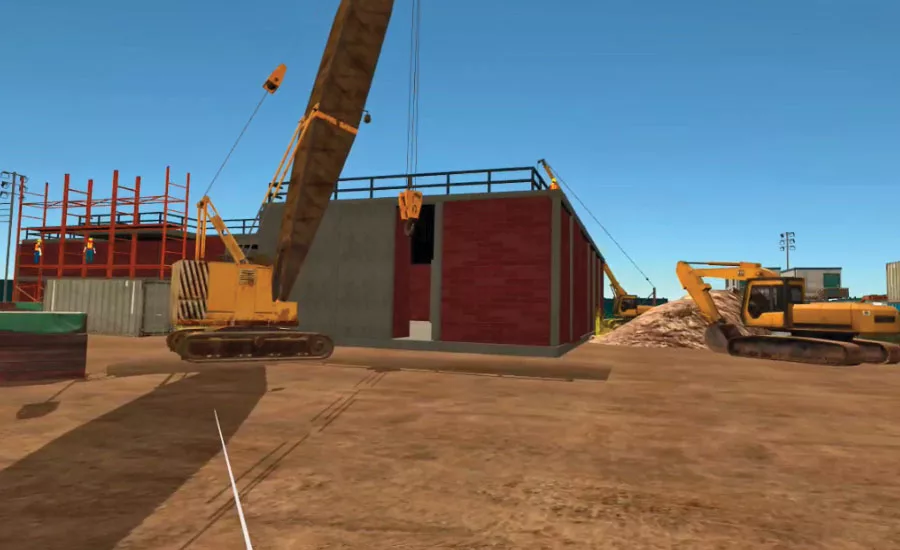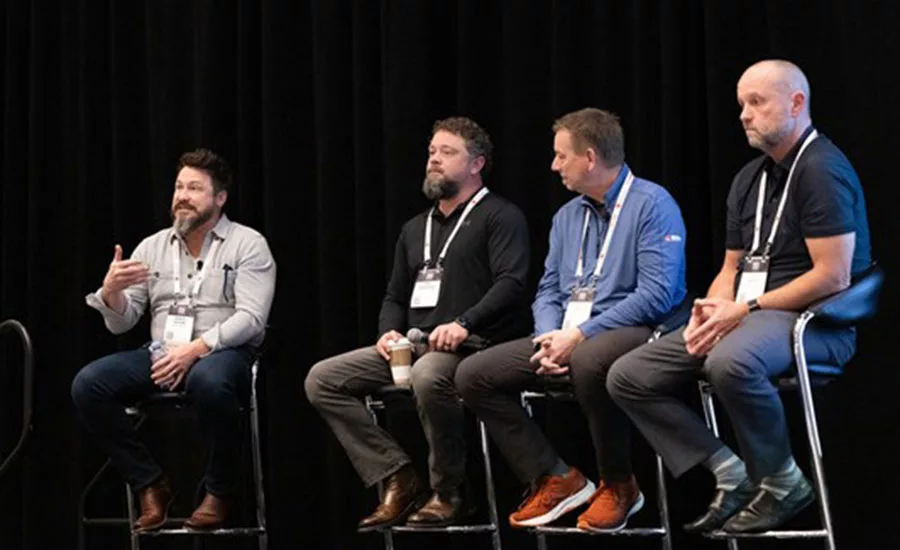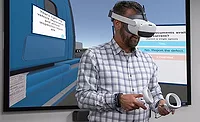Roofing Alliance, MSU Create Virtual Reality Ladder Safety Program
Research into VR Training Shows Promise of Enhanced Safety, Employee Retention

When released, the Roofing Alliance's VR module will provide supplemental safety training to roofing contractors.

Seen here are images from the ladder safety VR training, which replicates a construction site and how to properly set up ladders. Images courtesy of Saeed Rokooei and Alireza Shojaei.

Seen here are images from the ladder safety VR training, which replicates a construction site and how to properly set up ladders. Images courtesy of Saeed Rokooei and Alireza Shojaei.

Seen here are images from the ladder safety VR training, which replicates a construction site and how to properly set up ladders. Images courtesy of Saeed Rokooei and Alireza Shojaei.

Seen here are images from the ladder safety VR training, which replicates a construction site and how to properly set up ladders. Images courtesy of Saeed Rokooei and Alireza Shojaei.
In the roofing industry, training for safety tends to be hands-on. After all, there are only a few ways to show how to properly use a ladder so accidents don’t happen on the job. It’s just the reality of the industry.
But thanks to the Roofing Alliance, it may soon be the Virtual Reality (VR) of the industry as well.
The alliance and researchers from the Mississippi State University (MSU) Building Construction Science program are studying the efficacy of using VR in safety training for roofing contractors, and so far, the results are promising.
“The goal is to determine whether VR technology can help deliver better training in roofing,” said Josh Kelly, Roofing Alliance task force chair. “The initial focus is on rooftop safety because it is vital, and the task force sees the potential for VR to make high-quality training more available, more appealing to workers, and ultimately more effective.”
Saeed Rokooei, Ph.D., and Alireza Shojaei, Ph.D., assistant professors at MSU, approached the alliance with the idea of using emerging technology like VR to enhance safety in the roofing industry. Their proposal, titled “Evaluating the Efficacy of Virtual Reality Technology for Improving the Roofing Construction Workers’ Safety,” received approval for funding in April 2020.
“Our aim is to introduce a new mode of training to roofing contractors,” the researchers said. “This training model, which utilizes VR technology, is risk-free. It has a low initial investment and low maintenance costs and can be employed any time, any place.”
An alliance task force, headed by Kelly, provided the professors with a list of items that should be considered when using a ladder or while working on a roof. Based on this list, they designed scenarios, developed models and activities, and implemented them in a VR environment.
Participants in the training find themselves in an interactive, 3D virtual world that replicates a real-world construction site. They then go through various scenarios, such as assessing jobsites for the best ladder location, selecting the proper ladder based on height and weight, inspecting the ladder, and how to set up and secure a ladder.
Participants experience the sensation of climbing a tall ladder, giving them an idea of what to expect when they make a climb in real life. If someone’s going to make a mistake on a ladder, it’s better to have it happen virtually than taking a real tumble.
“Our aim was to give users a sense of reality,” the professors said. “For instance, users can lift ladders and place them at an appropriate location following the guidelines from the software. Another factor that we kept in mind throughout the design and development process was the user experience. We were cautious about what users see, feel, or expect when using this application. This helped us to simulate working conditions better.”
Alliance officials say the module is meant to be a supplemental training tool for roofing contractors, and isn’t meant to replace all other training methods. But as many roofing companies learned over the past year, technology is crucial to survival.
“Although the pandemic wasn’t a concern when the project started, in light of recent events, the potential benefits of training in a virtual environment are appealing, and the team is hopeful that lessons learned during this pilot project will pay dividends into the future,” Kelly said.
Virtual Reality in Real-World Scenarios
Rokooei and Shojaei say the design process for the VR module is completely done, and after making some final modifications and adjustments, they hope to deliver the project by the end of summer. Once roofers have the application in hand, they are encouraged to provide feedback.
“The initial feedback received shows that VR tools can be effective tools in safety training,” they said. “This feedback correlates to prior research and studies showing VR training can be attractive, engaging and effective, specifically for the younger generation.”
A study published earlier this year in the ASCE Journal of Construction Engineering and Management used VR to test risk-taking behaviors in roofing contractors. By pairing a simulated environment – complete with noise and wind – with a real sloped roof assembly on a flat surface, researchers found that roofers will take more risks on the roof when they feel protected by strict safety measures and equipment.
VR isn’t just for studies and training. Tech-savvy roofing contractors have adopted VR as a sales tool, such as having a homeowner wear a pair of goggles to view their home in lieu of aerial photos. VR has become a valuable retention tool as well, with roofing contractors creating VR programs for both sales and laborers alike.
“We believe, the roofing sector, like many other industries, can embrace and benefit from new technologies, and we are delighted that we were pioneers in this regard,” the professors said. “Our main goal is to expand the use of this new safety instructional tool by making it available to all.”
This year, the Roofing Alliance celebrates 25 years of supporting the roofing industry. As it looks forward to another 25 years, Executive Director Bennett Judson said she wants to see the foundation continue to invest in advancing technology for roofing’s next generation.
“In communicating with a lot of our students, that’s what really piques their interest,” Judson said.
Looking for a reprint of this article?
From high-res PDFs to custom plaques, order your copy today!






